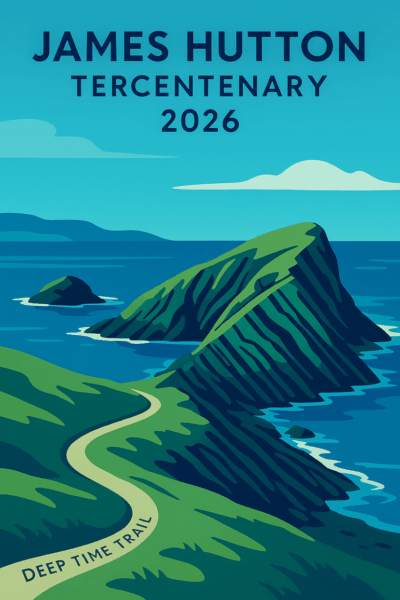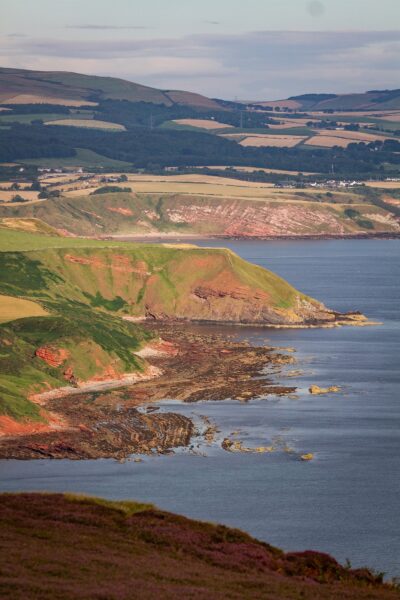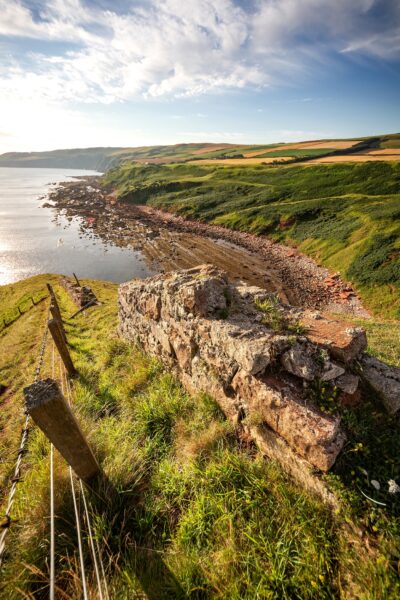
James Hutton Tercentenary
The SSDA is working with the James Hutton Institute, Edinburgh Geological Society (EGS), Scottish Geology Trust (SGT), Geowalks, Scottish Borders Council (SBC), South of Scotland Enterprise (SOSE), and VisitScotland, to support the James Hutton Tercentenary in June 2026 to maximise lasting benefit to the South of Scotland visitor economy.

By June 2026 we collectively aim to have:
- A ‘Deep Time Trail’ to Siccar Point, with appropriate parking, signage and safe access.
- A high-quality visitor offering with inspiring interpretation across physical signs and audio/digital story-telling.
- Coordinated and impactful marketing which inspires people to visit Berwickshire, encouraging and supporting them to stay in the South of Scotland, exploring further and spending more.
Beyond June 2026, we aspire to have:
- Refreshed existing panels & hub structure at Cockburnspath and along the Coastal Path, to guide visitors to Siccar Point on foot.
Strategic context
James Hutton is a key part of the South of Scotland’s story; he was a resident and farmer in Berwickshire and is the founder of modern geology. He was a polymath, hugely influential in the development of modern agriculture, a founder of the Royal Society of Edinburgh and an innovative industrialist, canal builder, naturalist and physician.
Siccar Point on the Berwickshire coast is one of the most significant locations in the history of geological sciences. It is an unconformity, a geological feature that represents a significant time gap and helped Hutton illustrate his theory that rocks are formed slowly by natural processes, that are ongoing today and will continue ceaselessly into the future. This ultimately led to the concept of Deep Time and our modern understanding of how the Earth works.
The world will celebrate the 300th anniversary of James Hutton’s birth in June 2026, along with a number of other tercentenaries associated with the Scottish Enlightenment. This is a key opportunity to inspire new generations by the story of James Hutton, the global significance of Siccar Point, and to encourage more people to visit and stay in the South of Scotland.
Siccar Point was awarded Site of Special Scientific Interest (SSSI) status in 1961 which means it is afforded certain protections, which are managed by NatureScot in Scotland, under the Nature Conservation (Scotland) Act 2004.
There have been several years of planning around the Hutton Tercentenary, led by the James Hutton Institute. In 2024 the Edinburgh Geological Society commissioned CMC Associates to develop the plans for improved interpretation at Siccar Point. This led to the proposed Deep Time Trail, a 1.3 km walking path from the nearest road. The Scottish Geology Trust is organising a Crowdfunder to raise money to build the Deep Time Trail, with consultant Caroline Gould leading the planning of this. The Crowdfunder will launch on 15 September 2025.


The SSDA, VisitScotland, SOSE, Scottish Borders Council and Dumfries and Galloway Council are lead agencies in the delivery of the South of Scotland Responsible Tourism Strategy (2023-33) which will increase the value of the South’s visitor economy by £1bn and support 20,000 jobs. A key lever to achieving this economic growth is increasing the number of higher-spending international visitors to the South of Scotland. The James Hutton Tercentenary is seen as a key opportunity to support the delivery of the Responsible Tourism Strategy; there is therefore strong collective interest in working collaboratively to maximise the lasting economic impact.
Our collective challenge is to tell the James Hutton story with sufficient passion and energy, in interactive, immersive and engaging ways, to appeal to a wide, generalist audience and to inspire international visitors interested in geology to visit the South of Scotland. We need to explain why the rocks at Siccar Point are key to how we understand ourselves as a species and the planet we live on.
Pillars of work
There are broadly four pillars of work in this partnership:
1) Deep Time Trail: physical access and signage:
2) Deep Time Trail: story-telling:
3) Tercentenary celebrations:
4) Business engagement & coordinated visitor offering
For full details, see Project Plan.




